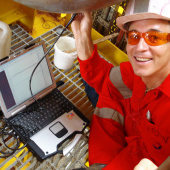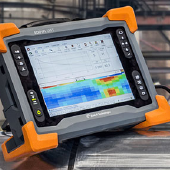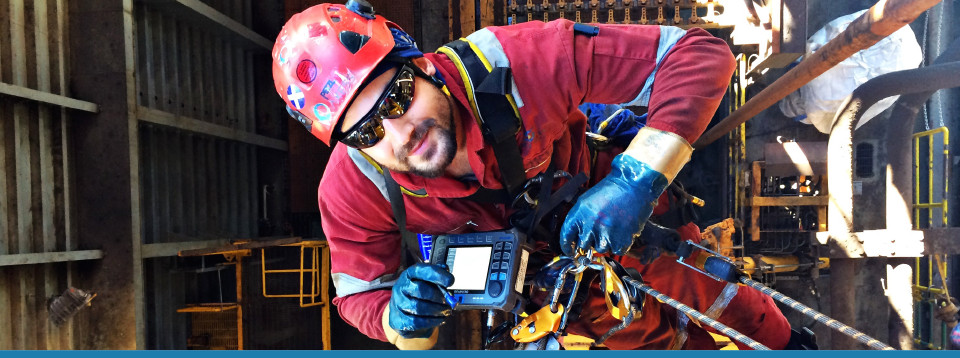Our Services:
In-Service Inspection
Safety and compliance are fast becoming the focal point of any business. Our customers rely on us to provide Industry qualified and certified Inspectors that are committed to
maintaining our customers' quality standard and also to ensure the integrity of their respective sites.
Our experienced and certified inspectors are available to our variety of clients in the petrochemical, oil and gas, renewable energy and maritime sectors. We perform our Inspections based upon our customers' individual RBI programs and also in accordance with their specific Inspection programme requirements.

Ultrasonic testing (UT) is recognized for having the highest depth of penetration to detect subsurface flaws in welds and plating. Our sophisticated ultrasonic testing equipment is highly accurate in determining flaw location and estimating the size and shape. Detected flaws are evaluated with immediate results.
Magnetic particle inspections are used for detecting surface and near-surface discontinuities. Wet Magnetic particle is the most common MPI method but dry powders can also be used depending on the application or the temperature of the component. MPI is also one of the most cost-effective inspection methods used.
Eddy Current Testing is used for crack detection, material or coating thickness and conductivity measurements.
This is one of the most popular inspection methods. Penetrant testing it is highly sensitivity to small surface opening flaws and discontinuities. DPI is also a cost effective solution to rapidly inspect large objects or a high quantity of items.
This is a rapid, non-destructive method. Positive material identification is performed on a wide range of components and provides a semi-quantitative material chemical analysis. It is used for both material verification and identification. Positive material identification can prevent potential product failure when used on items of critical importance in the Oil and Gas industries.
This test is used for evaluating the mechanical properties of metals and other materials. The purpose of the test is to determine the suitability of a material for a given application eg: conformance to a standard, prior to repairs or material that has been subjected to heat treatment.
NDT Visual Inspection is used in a wide-range of applications. Visual Inspection is performed on structures, welds, pressure vessels etc. Visual inspection provides opportunities to assess the equipment or plating condition using a variety of tools such as mirrors, weld gauges, profile gauges and magnifying glass. Remote Visual inspection using cameras (Endoscopes etc) can be an effective method for inspecting hard to reach areas such as heat exchanger tubes, pressure vessels of a small diameter and for performing Internal Inspection of pressure vessels when man entry is not possible.
This is a form of non-destructive testing that uses ionizing radiation to inspect materials and components with the objective of locating and quantifying defects and degradation in material properties that would lead to the failure of engineering structures. Digital radiography is a form of radiography that uses x-ray–sensitive plates to directly capture weld / material data transferring it to a computer system without the use of film and the need for process chemicals. This is a great advantage in time efficiency as results can be viewed and interpreted immediately.

OIM Services offers Pulsed Eddy Current Inspection testing which is an advanced Eddy Current testing method. The main purpose of this method is for the detection of Corrosion Under Insulation (CUI).
The phased array corrosion probes produce a focussed high-resolution beam that creates a detailed image section of piping, plating or weld making it easy to identify flaws or discontinuities. Phased array corrosion mapping can be used to detect pitting and corrosion on the inner wall of pipes and vessels.
TOFD is often coupled with pulse-echo or phased array techniques in order to cover the root and cap regions of the weld or plate / pipe section.
Time-of-flight diffraction technique is highly sensitive and can detect multi-oriented indications that are not easily detected by conventional means.
